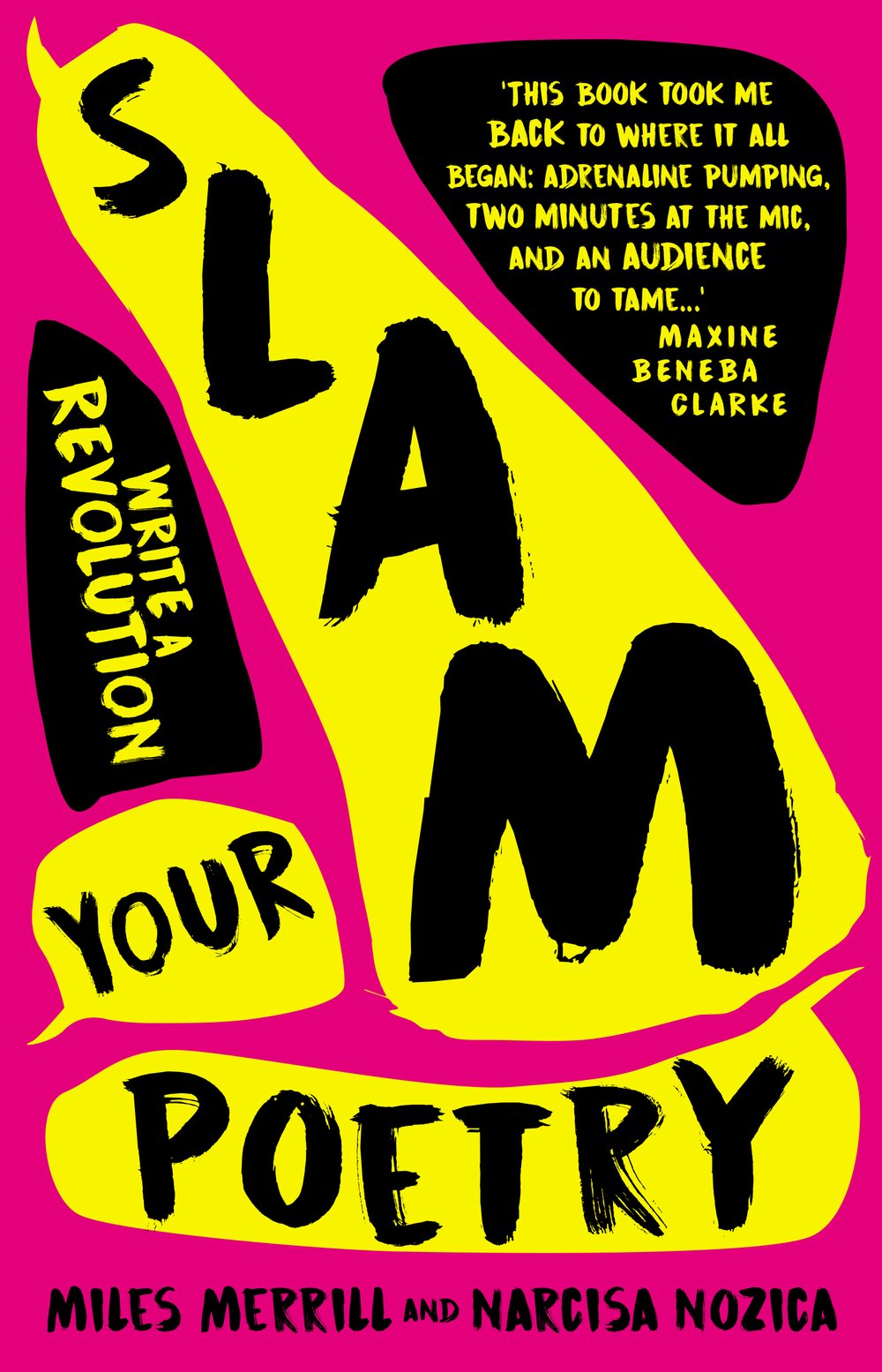I wanted to start a conversation with educators, writers and performers. So, I asked Narcisa Nozica, a high school teacher who toured the US studying youth poetry slam movements, to join me in a written dialogue. This led to chats with writers in various spoken forms, poets turned novelists, event organisers, other teachers and more. All in an effort to figure out the role of spoken word in schools, communities and the arts/media industry.
Slam Your Poetry: Write A Revolution is not a static discussion. It’s a collection of thoughts and feelings from a handful of thinkers all investigating how we compose and tell stories.
With this first serve of high-speed thoughts, Narcisa and I are aiming for returns from a multitude of ‘rackets’: theatre, literature, teaching, speech-writing, lyricism even advertising copy-writers. So much of the way we share knowledge today is through spoken text and yet the understanding of how we write to perform and speak what we write is filled with gaps and silos – screen-writing separated from stand-up separated from solo-theatre as opposed to spoken word poetry, podcast presenting, audio books ... Where is the analysis that unites these forms under the banner of performed writing? What are the commonalities and distinctions?
Slam Your Poetry does not give definitive answers to these questions. It offers some ideas but mainly asks you, the consumer of these words, to think of answers and respond with your own thoughts through status updates, blog-posts, online groups, class rooms, comments and through your own creative writing and speaking.
Most of the transfer of knowledge is done by people in control of the platforms for sharing information: news companies, TV networks, social media corporations, tech giants. But these formal filters for shared ideas are losing their power. Many platforms for telling stories are accessible to you and me. We can hear directly from the independent individuals, the people who pick up a book called Slam Your Poetry: Write a Revolution! Anyone can now share an idea and have it liked or commented on.
Artists embed their messages in narrative and metaphor. The stop-immigration-detention poem. The gender-identity song. The end-climate-change film. The deeper and more personal you make your story, the more emotional impact your message will have. When you show that you trust the audience thiiiis much (hands stretched wide) with your deepest feelings, they will feel you have pulled off the veil of ‘stranger’ and recognised them as family.
I’ll let you in on a secret: there is no such thing as ‘slam poetry’. It’s not a genre. It’s an event format, a platform to attract audiences to poets. You can do anything with words – tell a story, sing a cappella, perform a monologue or string together a bunch of sounds while doing a back flip. It’s whatever you do with mouth, body and mic. Performing your writing is like stand-up comedy, but the emotional range goes further than just laughter. Your audience might cry, cheer or snap their fingers in collective appreciation. They should pay you.
Poetry slams are just one tool for moving your words from your head to an audience. They are just one way to get an audience to listen and to help a community feel heard. There’s much more to it than 2 or 3 minutes on stage in a competition. The real goal is to use the combination of writing and performance to propel your ideas.
This book is also for people who have never thought about getting their thoughts down on paper, and the many more who have never thought about standing up and speaking those words in front of other humans. This is a life skill. You need to learn how to tell your stories. Then you take this skill and apply it all over the place – in presentations, articles, performances, relationships … Poetry gets to that core skill – good-quality writing.
I’ve taught it to the IT team at an international insurance company when they wanted to present without PowerPoint. And to a group of country town councillors when they wanted to talk to constituents about drought. And to thousands of young people in schools, youth centres and festivals who just want a creative outlet for their thoughts.
As a writer in any genre, you are communicating with the public. If you do it well and publish, you will be invited to speak in person to live audiences. Get used to it. Write and get out there.
A live poetry slam is user-generated content, crowd-sourced and pushed to the top through the likes and views of an audience. It’s a democratic creative forum. It’s even more accessible than the online space. It’s direct and immediate. Poetry slams leap barriers. No computer. No cast. No crew. No camera. Anyone can stand in front of a group, say what they feel and have it validated by the audience’s reaction.
Use this book as a treasure map to help you find the gold hidden inside your heart and head, then pour it out as poetry, song and stories. This is a guide that will lead you to the X marking the spot on the stage, behind the microphone, in the spotlight.
Miles Merrill's and Narcisa Nozica's book Slam Your Poetry: Write a Revolution will be published by NewSouth in February 2020.


